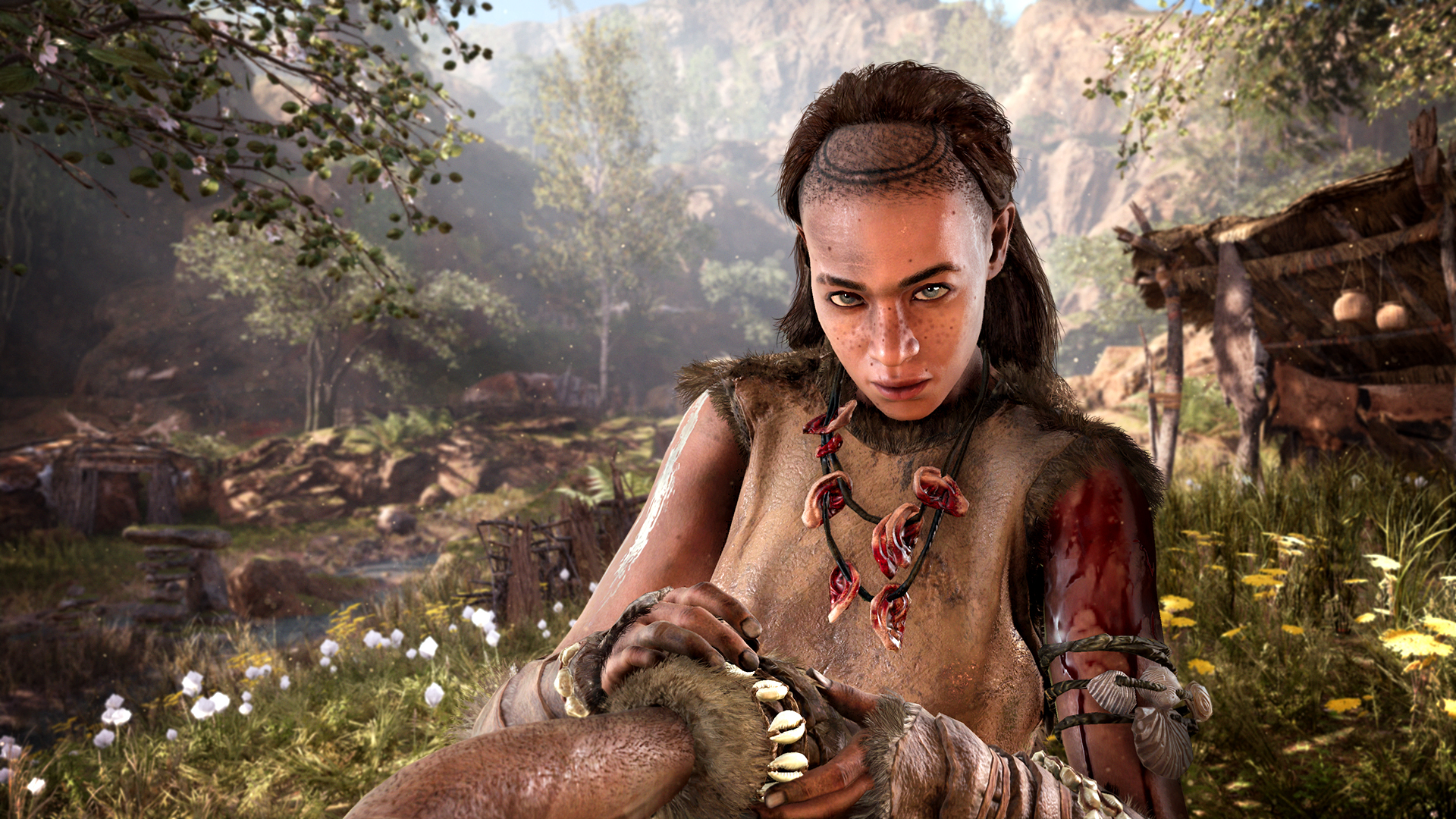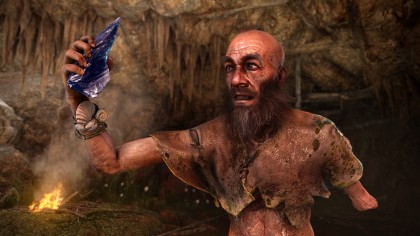Far Cry Primal preview: a familiar game with a Tomb Raider twist
Screens of the Stone Age

I'm creeping through the undergrowth in my deer-hide pants, my tamed wolf at my side, my owl flying somewhere overhead, congratulating myself on my unparalleled lethality in this Stone Age landscape. I have killed many cannibals, a few dogs, and even a wolf or two.
I am a predator.
I growl to myself. Then I hear a deeper, matching growl. As I turn slowly to my side, I see a brown bear, standing tall, one of the real apex predators. To him, humans are the bottom of the food chain. I'm already dead, but I hit him with a flaming club to show willing. Ten seconds later, my bones presumably crushed, I'm magically whisked back to camp, to try that again.
Far Cry started as a series about a hostile yet lush open world, where you gained superhuman abilities to cope with the smart, tough enemies. That skin has since been taken by many games - including Ubisoft's own Assassin's Creed, Saints' Row and Watch Dogs - so we've seen a slow shift of the series to something different, involving exotic settings, animals, vehicles, crafting, hallucinogens and freedom.
Primal is the illogical next step, a game taking the series' overpowered brutality back to something extremely primitive - the days of the caveman, ten thousand years ago.

You play as Takar, the surviving hunter of the Wenja tribe, who's returning to his newly-settled people after much time hunting in the wasteland. He finds them scattered, and being preyed on by other human tribes - including the cannibalistic Udam and the advanced, yet pyromaniac and sadistic Izila. Your role is to gather the tribe and protect them from the other tribes, ultimately eliminating them as a threat.
"We knew right away we had to tell a very simple, straightforward story" says David Footman, the game's Cinematic Director. "The peoples back then, there wasn't a modern contemporary frontal cortex brain of yesterday and today. These people were living in the movement, simple and interesting."
Sign up for breaking news, reviews, opinion, top tech deals, and more.
Playing the game, the feel is partway between the most recent Far Cry games and the new Tomb Raider; it owes a lot to Lara Croft's most recent outing, with its focus on arrows and melee brutality, but the game-feel is pure Far Cry. We play the first chunk of the game as Takar's team of hunters separate off a baby Mammoth and kill it, before being hunted down themselves by a bear-sized Sabretooth Tiger. We then get some time with the game's open world and fight off an Udam assault before flashing forward to our first encounter with the Izila.

Mammoth undertaking
The combat, which you're thrown into from the get-go, is a mix of Tomb Raider's linear, brutal man-massacres and Far Cry's open world with gadgets and superpowers. You've got a limited amount of weapons, all of which can be thrown or fired, such as spears, clubs and arrows. You can also set them on fire, to fend off wildlife like tigers, bears or wolves.
Early on, you're given a traditional Far Cry spirit journey, where you take on the form of a bird, gliding after your spirit owl through various colour-saturated waterfalls and canyons, passing by golden-glowing predators and prey, lying side-by-side. It's extremely beautiful and quite dissonant with the mass murder you commit elsewhere in the game - which, of course, isn't unusual for Far Cry.
I ask Footman about this dissonance. "One of the pillars of the brand is insanity, y'know?... in Primal, the shaman is your conduit to the spirit world. It's more than a drug-induced state, it's a spiritual connection."
Though the team has obviously researched the setting (including getting linguists from the University of Kentucky to create three variants of an authentic stone age language for them), so much of the era is unknown or plain boring - so the team is obviously not trying too hard for accuracy, but more for believability.
"There's definitely a public fantasy out there of what it's like to live in the Stone Age." says Footman. "It's a lot more apelike than it really was."

That's why the primitive tribes fill such stereotypical roles. The Wenja feel African, while the bulky cannibalistic Udam seem almost Neanderthal and their storyline involves a lot of killing. Meanwhile the more refined Izila have something of the Aztec about them, and have more ritualistic ways of dealing with enemies.
"We did weekend workshops with a movement coach and two choreographers in Toronto to weave the language into a tribal signature for each tribe." says Footman. And these tribes are just the first enemies that have been revealed - as Footman said "it's something we're going to reveal later on - larger antagonists that are connected to the tribes."
Tribe mentality
Similarly, the animal taming is pretty unbelievable. After your spirit journey, you awaken the power to recruit animals by feeding them meat and waving your hands at them - if you've unlocked their upgrade level in the skill tree. These range from the top-end killing machine that is the Bloodfang Sabretooth Tiger down to the lowly and flimsy Dhole dogs, and across to a badger.
The different animal types have different capabilities - felines are stealthy, canines are good hunters, ursine are walking tanks, and the dhole retrieve items for you.

Beneath that new rugged skin, this is the old Far Cry. There's an inexplicable skill tree that your experienced, toughened hunter gradually unlocks, and which is tied into skills gifted by speciality members of the tribe who you can find out in the world.
Similarly, crafting is crude and instantaneous, allowing you to turn an array of animal skins and materials into new weapons or healing balms or items. Or even into buildings, fitting with the latest fad in open world gaming, building your own town (see also Metal Gear Solid V and Fallout 4).
Far Cry Primal isn't, on this showing, a smart or an innovative game. It's definitely more of the same with a new skin, much like Blood Dragon was, but without that expandalone's rich humour. What it does have is a new old world to explore, a visceral proximity to its killings and an unusual, simple story to tell - man's ascent from prey to predator, firsthand.